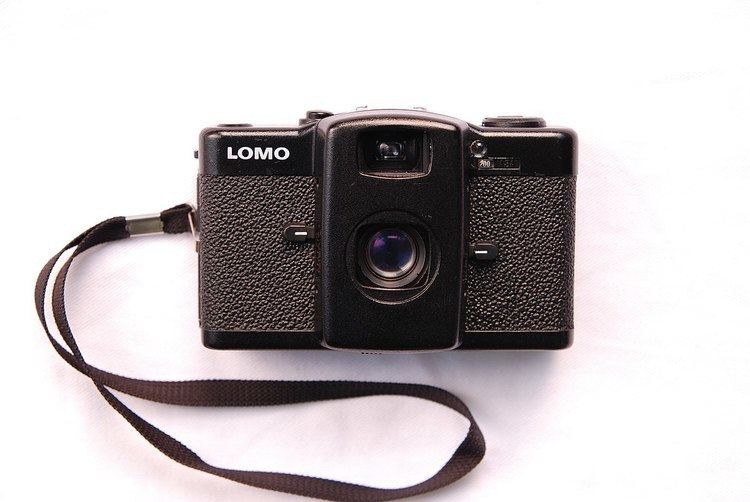 | ||
Lomography is a commercial trademark of Lomographische AG, which their creators associate to a photographic image style and an analog camera movement and community facilitated by The Lomographic Society International.
Contents
The Lomographic Society International was founded in 1992 by a group of Viennese students after they discovered the LCA, a camera created by LOMO PLC of Saint Petersburg, Russia. Lomography started as an art movement through which the students put on exhibitions of photos within Vienna; the art movement then developed into a commercial enterprise. Since 1995, Lomography has been the sole distributor of the LC-A camera outside the former Soviet Union, and has moved into producing their own range of analog cameras, films and accessories.
History
The lomography name is inspired by the former state-run optics manufacturer LOMO PLC of Saint Petersburg, Russia that created and produced the 35 mm LOMO LC-A Compact Automat camera, now central to lomography. This camera was loosely based upon the Cosina CX-1 and introduced in the early 1980s.
Lomography also represents the commercial trademark of Lomographische AG, an Austrian company that produces cameras and accessories. The society is headquartered in Vienna, Austria.
In 1991, a group of Viennese students discovered the LOMO LC-A and were inspired by its "unique, colorful, and sometimes blurry" images. The Lomographic Society International was subsequently founded in 1992. After a series of art exhibitions culminating in shows in New York City and Moscow, Lomography signed an exclusive distribution agreement with LOMO PLC in 1995 — becoming the sole distributor of all LOMO LC-A cameras outside of the former Soviet Union. The new company reached an agreement with the deputy mayor of St Petersburg, the future Russian Prime Minister and President, Vladimir Putin, to receive a tax break in order to keep the LOMO factory in the city open.
Since the introduction of the original LOMO LC-A, Lomography has produced a line of their own analog cameras. In 2005, production of the original LOMO LC-A was discontinued. Its replacement, the LOMO LC-A+, was introduced in 2006. The new camera, made in China rather than Russia, featured the original Russian lens manufactured by LOMO PLC. This changed as of mid-2007 with the lens now made in China as well. In 2012 the LC-A+ camera was re-released as a special edition.
Models
Cameras that have been marketed by Lomographische AG:
In 2013, together with Zenit, Lomography produced a new version of the Petzval Lens designed to work with Canon EF and Nikon F mount SLR cameras.
Film
The company produces several kinds of 35 mm, 120 and 110 film.
Publication
Lomographic aesthetic
Similar to Eastman Kodak's concept of the "Kodak moment", the philosophy behind Lomography is summarized in its motto, "Don’t Think, Just Shoot." This motto is accompanied by The Ten Golden Rules which are supposed to encourage spontaneity and the taking of photographs anywhere, while minimizing considerations of formal technique. Typical Lomography cameras are deliberately low-fidelity and of simple construction. Some cameras make use of multiple lenses and rainbow-colored flashes; some exhibit extreme optical distortions and light leaks. The intention of the lomographic style is one of acceptance of such deficiencies in order to create images with a unique character.
Typical of lomography are images with high contrast and with unusual saturation and color that were created using the technique called cross processing in which film intended for developing in slide chemistry (E-6) is processed in photographic negative chemistry (C-41), and vice versa. This technique can be employed with any film camera and can be somewhat mimicked with photo-editing software such as GIMP or Photoshop.
Community
The Lomographic Society International runs Lomography Gallery Stores and so-called "embassies" dedicated to the growth, support and public exposure of analogue photography. Customers interact through social events such as exhibits and workshops.
An example of the society's events showing peoples' lomography talents is the Lomokikuyu competition, which raises money for charity.
The organisation organises the Lomography World Congress, an international conference.
The Lomographic Society International maintains a community website featuring lomographic photographs.
